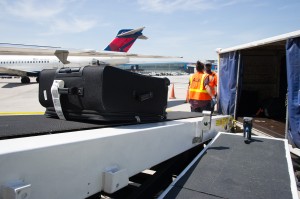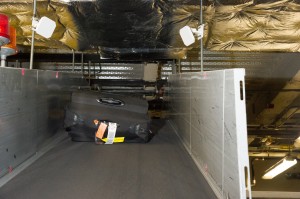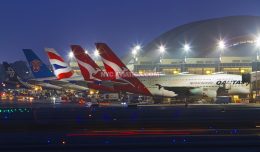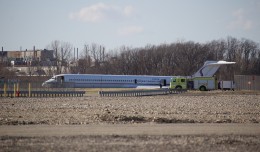(Editor’s Note: This is he first article in a two part series exploring the pros and cons of using RFID technology for tracking checked bags.)
I spent the first 10 years of my career managing a multi-million dollar inventory of rental equipment outside of the aviation industry. One of the most challenging aspects of the job was tracking what equipment was in stock and what was in the field at any given moment. While we used a system of barcodes that made tracking the inventory simpler, it wasn’t foolproof. Invariably, a few would be missed on an order for any one of a number of reasons.
Being a very tech savvy guy, I was well aware of the advances being made in Radio Frequency IDentification (RFID), even in my early days on the job. Back then, RFID was an emerging technology, and Walmart was making waves for moving to require all suppliers include the chips on every pallet for tracking purposes. Part of the reason why the plan was in the news was that some of the retailer’s suppliers were balking at the plan. The technology was new at that point and the cost of a chip was high, at least compared to a printed barcode. While I don’t recall if that plan ever came to fruition, it showed me that the technology could become a viable means of tracking inventory eventually.
My dream was for the day when each doorway could be outfitted with sensors that would automatically track each piece of inventory as it passed through going in or out. Alas, the employer closed long before I could even begin to think about actually implementing such a system.
When I heard a couple weeks ago that Delta Air Lines would be rolling out a brand new RFID bag tag system to 84 stations this year, I was genuinely excited. Such a system will bring some major benefits to the airline versus the common barcode-based bag tag.
One of the major benefits of RFID technology in general is the amount of data that can be encoded onto a tiny chip. Things like the passenger’s name, destination, and the bag’s routing can all be stored on the chip. This is in contrast to the existing barcodes, which represent a number, known in the industry as a ‘license plate”. This number functions in a similar fashion to a tracking number when you ship a package. One of the problems is that the current system of barcodes is limited to 10 numeric digits. This means that all additional  data must be stored “in the cloud” and accessed from a remote server every time the bag is scanned. While this is a perfectly fine solution when you’re dealing with existing infrastructure such as computer terminals and baggage systems, it does add another layer of complexity if you’re trying to expand beyond those devices.
data must be stored “in the cloud” and accessed from a remote server every time the bag is scanned. While this is a perfectly fine solution when you’re dealing with existing infrastructure such as computer terminals and baggage systems, it does add another layer of complexity if you’re trying to expand beyond those devices.
Part of Delta’s implementation of RFID bag tags involves RFID readers installed on belt loaders. These devices will scan each bag just before it is loaded onto the aircraft. If the destination information in the tag doesn’t match the info loaded into the scanner for that flight, the system will trigger an alert and stop the belt so that the ramp crew can resolve the issue. This should greatly reduce the number of misdirected bags, particularly as the systems become more widespread.
 Another major issue with the existing barcodes is that they are optical in nature. This means that they have to either be scanned by hand or by passing through a 360 degree laser ‘tunnel’ while on the conveyor belts of a baggage sorting system. Because bags need to be able to be scanned on all sides, including the side facing the belt, these scanners must be placed in the small gaps between two belts. As you might imagine, these gaps can easily collect all sorts of dirt, lint, and other debris. This debris can easily obstruct the lasers that are necessary for scanning the tags.
Another major issue with the existing barcodes is that they are optical in nature. This means that they have to either be scanned by hand or by passing through a 360 degree laser ‘tunnel’ while on the conveyor belts of a baggage sorting system. Because bags need to be able to be scanned on all sides, including the side facing the belt, these scanners must be placed in the small gaps between two belts. As you might imagine, these gaps can easily collect all sorts of dirt, lint, and other debris. This debris can easily obstruct the lasers that are necessary for scanning the tags.
It is estimated that as many as 15 percent of all bag tags fail to be scanned while passing through the 360 degree scanners. When a bag can’t be automatically scanned, the system rejects it and it is set aside to be manually checked by a human. This adds both time and complexity to the procedure, and also increases the likelihood of a bag misconnecting.
Of course, being a newer application of a not yet mature technology, there are bound to be a few hiccups as the new system is rolled out. This is particularly true with new parts that may need to be retrofitted onto existing equipment. However, the only way to mature the technology for a specific application is to actually begin using it for that purpose. Hopefully, Delta’s use of RFID technologies will help to quickly mature this implementation for the rest of the industry to adopt.
Ben Granucci, Standards Editor, is an aviation enthusiast and plane spotter based in New York City. Growing up in Connecticut, he has had his eyes toward the sky for as long as he can remember. He can be reached on Twitter at @BLGranucci or through his blog at Landing-Lights.com.







